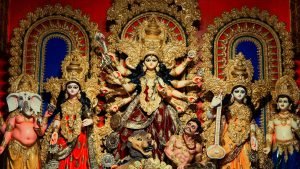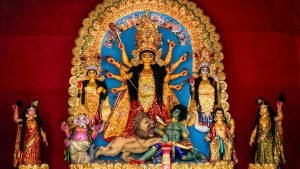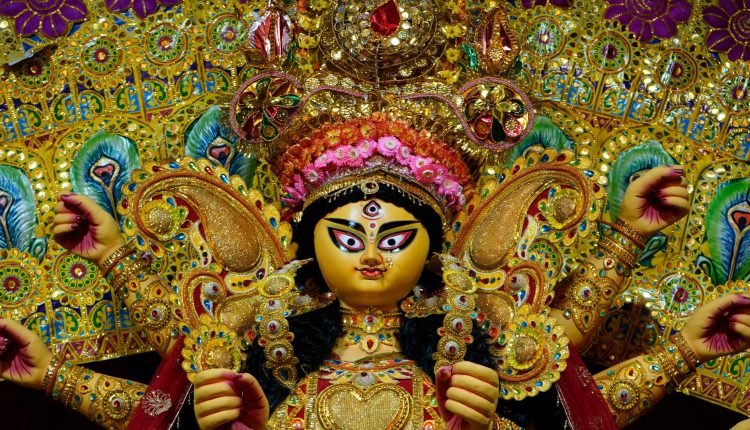Festival of Divine Power and Devotion
Navaratri, meaning “nine nights,” is one of the most significant and sacred festivals in Hinduism. Dedicated to Goddess Durga and the worship of divine energy (Shakti), it is celebrated with great enthusiasm and devotion across India and among Hindu communities worldwide. Traditionally observed from the first day of the bright fortnight (Shukla Paksha) of the month of Ashwin until Navami, the nine-day festival symbolizes the triumph of good over evil.
The celebration recalls the victory of Goddess Durga over the demon Mahishasura after a nine-day battle, culminating on Vijaya Dashami or Dussehra. It is not only a reminder of mythological events but also a time for individuals to overcome negative qualities like ego, anger, greed, and lust, while embracing purity and spirituality.

Worship of Nine Forms of the Goddess
During Navaratri, devotees worship the nine manifestations of Goddess Durga—Shailaputri, Brahmacharini, Chandraghanta, Kushmanda, Skandamata, Katyayani, Kalaratri, Mahagauri, and Siddhidatri. Each form represents specific virtues and powers, guiding devotees toward inner strength and spiritual awakening.
Four Navaratris in a Year
Few know that Navaratri is observed four times a year—Chaitra, Ashadha, Sharadiya, and Magha Navaratri. Among these, Chaitra and Sharadiya Navaratri are celebrated publicly and with grandeur, while Ashadha and Magha Navaratri are known as Gupt Navaratri.
Unlike the widely celebrated Navaratris, Gupt Navaratri is primarily observed by sadhaks (spiritual practitioners) and tantrics through secretive rituals, often at night. This form of Navaratri is devoted not only to Durga’s nine forms but also to the Das Mahavidyas—ten powerful goddesses in Tantric tradition.

The Mystical Gupt Navaratri
Gupt Navaratri is observed during the bright fortnights of the Ashadha and Magha months. It is considered a period for deep spiritual practices, purification, and the awakening of inner powers. Tantric rituals during this time focus on the worship of the Das Mahavidyas—Kali, Tara, Tripura Sundari, Bhuvaneshwari, Chhinnamasta, Tripura Bhairavi, Dhumavati, Bagalamukhi, Matangi, and Kamala.
The rituals are secretive and involve the chanting of specific mantras, use of yantras, meditation, homas (fire rituals), and strict fasting. Practitioners often perform these rituals in seclusion—at temples, ashrams, or within their homes during night hours, believed to be more potent for Shakti worship.
Why It Remains Less Known
Gupt Navaratri is less popular among the general public compared to Chaitra and Sharadiya Navaratri. Its association with Tantric practices and its secretive nature make it a festival largely confined to advanced practitioners and spiritual seekers under the guidance of gurus. The focus here is not on community celebrations but on personal spiritual transformation and the awakening of hidden energies.
Centers of Gupt Navaratri Practices
Gupt Navaratri holds special importance in India’s Tantric centers such as the Kamakhya Temple in Assam, Kashi (Varanasi) in Uttar Pradesh, and other Shakti Peethas across the country. During this period, practitioners engage in intense meditation and mantra chanting to seek the blessings of the Goddess.
While relatively unknown to the masses, the spiritual significance of Gupt Navaratri is immense. It symbolizes the destruction of ignorance and weakness, leading the seeker toward divine knowledge and empowerment.



Comments are closed.